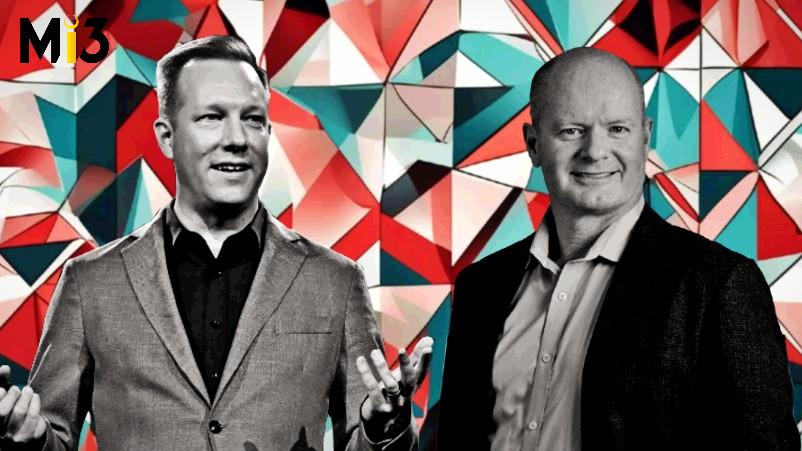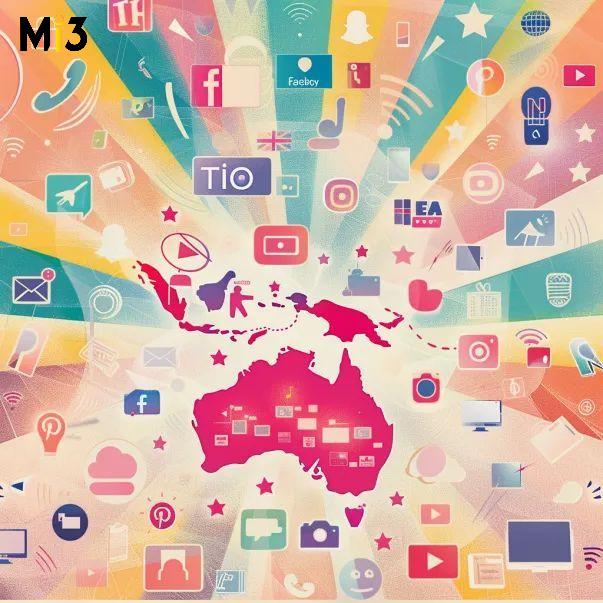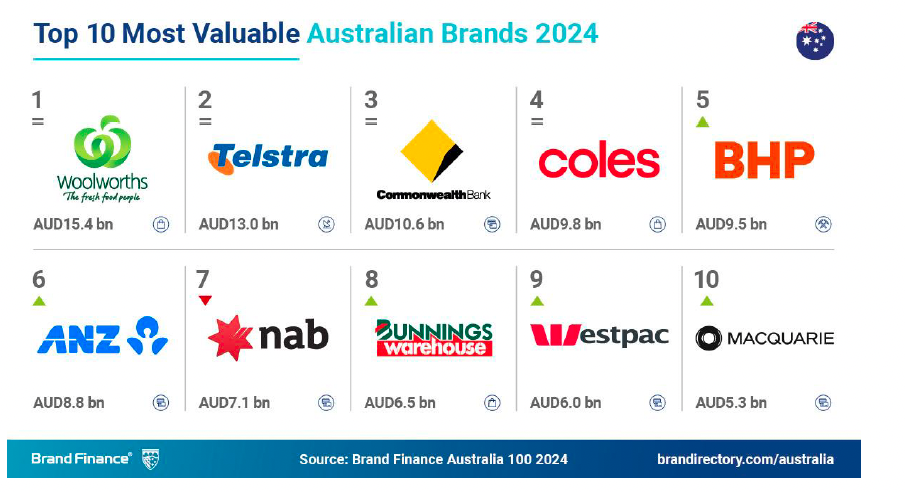‘If you’re not building mental availability in B2B, you’ll miss the 81% buying the first brand that springs to mind’; Adobe and ex-Salesforce marketing chiefs align on dangers of qualified lead reliance, AI or otherwise

What you need to know:
- B2B marketing is finally realising the personalisation at scale B2C has been closer to achieving for years thanks to the arrival of the latest martech and AI advancements, according to Adobe VP marketing APJ, Duncan Egan, speaking to Mi3 at the recent Adobe Summit.
- But that doesn’t mean AI was a welcome arrival, he says, noting “fear, uncertainty and doubt” in equal measures across the marketing team. But what Adobe has seen through teams leveraging its own products is it frees them up to really think about the marketing. Per Egan: “By creating those efficiencies, we have freed up our marketers to think more deeply about what they’re doing. Yes, about the why, but also the how and the impact.”
- While he’s all in on data and tech advancement, this cannot come at the expense of brand building, says ServiceNow CMO Colin Fleming. He’s accused B2B marketers of spending too long obsessing over marketing-qualified leads (MQLs) and “FOG, or fact deficient, obfuscating generalities” instead of focusing on brand-building and real human engagement.
- Fleming’s belief is B2B marketing should be as creative, provocative, and strategic as B2C – as well as adopt personalisation at scale, which ServiceNow is certainly doing.
We are all stretched. I don't think there are many marketers sitting around going, geez, I've got all this time on my hands, what should I do? But what we have found is by creating those efficiencies, we have freed up our marketers to think more deeply about what they're doing. Yes, about the why, but also the how and the impact.
According to Adobe VP of marketing APJ, Duncan Egan, B2B marketing now trumps B2C capability and creds, because “we have the ability to do what B2C does with first-party data, and now have the tools at our disposal to really be able to personalise at scale”.
Egan caught up with Mi3 at last week’s Adobe Summit to share his views on industry sentiment, the rush for efficiencies off the back of AI advancement, and how his team is lining up to be first users of the latest swathe of AI agents coming into the Adobe Experience Platform. Adobe has debuted 10 pre-built agents across the Adobe Experience Platform to assist marketers with common tasks through the marketing supply chain, as well as new brand-safe AI creative templates and collaborative ways of working to more easily resize, create and deploy more creative assets across channels.
“From a B2B perspective, the real time and volume nature of what we do is not the same as B2C. Your content is still king, however, and we still need to make sure we deliver the right content at the right time. But I think the move to context, where the more we know about you and where you are, is key,” Egan told Mi3.
“We have evolved from a linear funnel – IQL, MQL, SQL [i.e. information, marketing and then sales qualified leads] – to an account and buying group-centric model. Rather than the individual, we look at the account, the buying group, then the signals. Are there people from your organisation who are business analysts or analytics all over our website, or going to webinars? These are all signals we would pick up. It might be that we have an analytics bootcamp next Tuesday in Sydney, so let’s send that to them as that’s a value add. The tech allows us to deliver content in the moment – it’s not as real time as a shopping cart, but we’re in the moment today in a way that is relevant, and that previously we would have not been able to execute. That’s because we now have a CDP, we have the ability to know the people, and we are looking at these signals to take actions.”
That doesn’t mean the Adobe marketing team were immediately on-board with AI as it entered the Adobe building, however. As was so succinctly put by Marriott International VP and global head of marketing orchestration, Hilary Cook, on stage at last week’s Adobe Summit, there’s an equal mix of excitement and scepticism around what AI can do sitting in the bellies of marketers right now.
“When AI first started coming into our organisation, there was fear, uncertainty and doubt, with people saying, ‘oh my gosh, I don’t know what I’m doing’. Well, actually, nobody knows, so you’re on a level playing field,” admitted Egan of the Adobe marketing team’s response. “But what we’ve seen through our teams leveraging our products is it frees them up to really think about the marketing.
“We are all stretched. I don’t think there are many marketers sitting around going, geez, I’ve got all this time on my hands, what should I do? But what we have found is by creating those efficiencies, we have freed up our marketers to think more deeply about what they’re doing. Yes, about the why, but also the how and the impact.
“Often, we run a campaign and say, we did this, we did this, then we move on. But what if we were to pause and say, let’s really dig into the outcomes of it: What could we have done to make it better, or to not do it again? As marketers, we’re not often good at saying stop.”
We can walk and chew gum at the same time. We can generate healthy brand and capture the demand in market. We know buying decisions often happen at first sight – 81 per cent of the time, professionals buy the first company that comes to mind. Why do we spend so much time on the journey? Great marketing builds demand before Google should know it.
Downgrading the MQL: ServiceNow global CMO Colin Fleming
It’s about time B2B got creative and strategic, argued ServiceNow global CMO Colin Fleming. On stage during day 2 of Adobe Summit, the former F1 driver and now marketer was quick to accuse B2B marketers of having spent far too long in the world of “FOG, or fact deficient, obfuscating generalities” – and of living or dying on their ability to secure a marketing qualified lead.
Fleming is one of a growing number of B2B marketers touting the power of “brand and demand, not or”. “This is not a binary decision and has never been a binary decision,” he said. Yet all too often, B2B marketers have allowed themselves to be measured by a lower standard, despite 70 per cent of US GDP being created from B2B transactions, he said.
“If there’s one thing I’ve learned about marketing, it’s that we are full of it,” he told attendees.
“We have spent the last 20 years finding increasingly convoluted ways of indicating the value of our organisations in ways no one seems to understand. We have allowed member partners and tech vendors to create acronyms every year to measure our businesses, and we find ourselves marketing to attribution models rather than humans that actually buy our products. We keep talking about how we need to be more human, or culture shaping, then return to our offices and do exactly the opposite.”
A 2022 whitepaper released by The Ehrenberg-Bass Institute unpacked how mental and physical availability are critical to B2B brand growth and why lead gen strategies at the expense of brand building are destined to fail. That’s partially because of the 95-5 rule, which states only 5 per cent of B2B purchasers are in market at any one point in time – meaning the other 95 per cent aren’t buying.
Fleming – a former Salesforce global brand marketing chief and disciple of 95-5 as a future cashflow growth model – is all too aware of this risk, and has been putting dollars behind bolder creative brand campaign work to prime longer-range prospects as he pursues a personalisation strategy through the funnel.
“We can walk and chew gum at the same time. We can generate healthy brand and capture the demand in market,” Fleming continued. “We know buying decisions often happen at first sight – 81 per cent of the time, professionals buy the first company that comes to mind. Why do we spend so much time on the journey? Great marketing builds demand before Google should know it.
“I also believe B2B can be just as provocative, creative and thought provoking as any of our friends in B2C in the room. We share an admiration for great storytelling, a bold perspective and deep, wonderful CX that should be the standard of the industry, not the exception.”
A digital workflow company, ServiceNow began adopting Adobe’s Experience Platform from 2021 and is a vendor partner. The Adobe platform was brought on to realise personalisation and interactions with 7,000 enterprise brands across every touchpoint, including its website and tailored email campaigns. ServiceNow said it’s also been gaining a more complete view of each customer by bringing together disparate data sets through a common data language, so they can drive better engagement.
Fleming claimed it’s “finally bringing B2B personalisation to life” using Adobe Journey Optimiser, while investments into in gen AI and synthetic research have helped ServiceNow identify new 76 category entry points it didn’t know about before.
“We have AI agents in every corner of our business. Now as we expand AI with Adobe, we’re connecting with brands we never thought possible, across hundreds of use cases,” Fleming continued. “We’re going from a product-led to brand-led organisation: That is our CEO’s words. This requires a huge cultural shift to make this change, across the entire organisation. You have to think about how company makes decisions, invest in business and measure success. Reimagine everything. AEP is helping to do that, and not just keep pace but set it.”
For Fleming, the biggest mission of all is increasing marketing’s strategic role inside the organisation. “Gone are the days of throwing leads down the stairs and living and dying by the MQL. We’re collaborating with sales as true business partners, looking at the full picture and finding opportunities. We’re saying goodbye to the idea that one lead will help us make the year or quarter, and finally realising it’s dozens of people, sometimes obvious, sometimes not, who are actively making the decisions to purchase our products. It’s about marketing and sales at the table together reinventing that relationship,” he said.
There’s a growing cohort of B2B marketers and evidence taking the same approach: The LinkedIn-backed B2B Institute and Bain last year outlined just how many decision-makers are involved in a buy, and that “hidden buyers” influence half of the buying process and have very different requirements from target buyers. Their numbers suggest B2B firms are missing out on trillions of dollars in deals annually as a result of focusing on outdated metrics and KPIs.
That work built on research across 900 cross-category B2B buyers by former Forrester analyst Kerry Cunningham, now at US firm 6Sense, that outlined by B2B marketers have “been focused on completely the wrong thing” by targeting individuals over buying groups – and the importance of brand within that wider set. In short, Cunningham found 83 per cent of the time they will initiate contact with the seller they have in mind, and 84 per cent of the time that seller goes on to win the business. Which means everybody else only has a 16 per cent chance of winning it – at best, tallying closely with Fleming’s numbers.
“We’re bringing these binders to life in our creative and advertising as well, with some great people we market to, their personalities and identity, as distinctive assets,” per Fleming.
It’s not about saying, let's reduce our resources, because it's going to impact somewhere else in the business. I don't have enough resources as it is. Leveraging this technology actually lets all of us do our jobs better and more impactfully for the business. You look at your week and think about how many things we all do that are very manual, repetitive and automated: In all of our lives there are opportunities for efficiencies. It’s finding them and going after them.
Efficiencies vs. job cuts
Whatever the leaning on brand versus demand, what’s clear is both Fleming and Egan want their teams to become more efficient, thinking more about the business objectives, and scrutinising whether they’re going about achieving them the right way.
“Maybe it takes 100 campaigns, maybe it takes four, but what are you trying to do in each of our unique situations? Because B2B marketing is not as generic as that,” Egan continued. “I do think the ability to get efficiencies out of AI, and such advancements in automating brand safe, asset creation – resizing, or making it shorter, making it longer – is going to make us more efficient and give us speed to market, which we’re all trying to achieve.”
Depending on the mandate of the company, Egan firmly sits in the camp of believers in AI as a means for marketers to becoming more productive, more efficient and achieve better outcomes. Not a mechanism to trigger job losses.
“It’s not about saying, let’s reduce our resources, because it’s going to impact somewhere else in the business. I don’t have enough resources as it is. Leveraging this technology actually lets all of us do our jobs better and more impactfully for the business,” Egan said. “You look at your week and think about how many things we all do that are very manual, repetitive and automated: In all of our lives there are opportunities for efficiencies. It’s finding them and going after them.”
This is even more apparent with the arrival of agentic AI for Egan. “This move to agentic, where we’ve gone from ‘tell me something, inform me’ to now ‘let’s go take action’, is a really interesting and exciting prospect for marketers. The ability to take that insight then deploy it through workflows to have a better outcome and impact on the business is really exciting. It’s very new for us, but I am excited,” he commented.
Yet with all that said, Egan doesn’t believe gen AI is going to replace human creativity – even with the arrival of Adobe’s new Gen Studio AI-powered creative templating, translation and resizing capabilities, which was apparently a big winner with the CMOs attending Adobe Summit last week.
“We still firmly believe it starts with the creatives and the ability to share, collaborate and really nail that ‘it’ – whatever ‘it’ may be,” Egan said. “Gen AI, I do not believe, will do that for us. And I think people feel that is not a path for success.”





